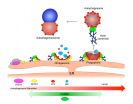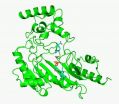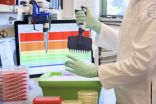(Press-News.org) Last June, in the early days of the Ebola outbreak in Western Africa, a team of researchers sequenced the genome of the deadly virus at unprecedented scale and speed. Their findings revealed a number of critical facts as the outbreak was unfolding, including that the virus was being transmitted only by person-to-person contact and that it was picking up new mutations through its many transmissions.
While public health officials now believe the worst of the epidemic is behind us, it is not yet over, and questions raised by the previous work still await answers.
To provide them, a global team from Harvard University, the Broad Institute, the U.S. Centers for Disease Control and Prevention (CDC), and the National Institute of Allergy and Infectious Diseases (NIAID, part of the National Institutes of Health), along with many other institutions*, sequenced more than 200 additional genomes from Ebola virus samples, to capture the fullest picture yet of how the virus is transmitted and how it has changed over the long-term outbreak.
In an effort to enhance the global response, this team made their data publicly available as it was produced throughout last year. "One of the most rewarding aspects of working in this outbreak response is the connections we have made with so many extraordinary individuals through open data sharing", said senior author Pardis Sabeti. The global team that assembled as a result has now described their analysis in a June 18 paper published in Cell.
"Our early work tracked the virus's movements over just three weeks as the outbreak emerged in Sierra Leone," said Sabeti. "Now with a view of the virus over seven months, we can understand how it has been moving and changing over the long term."
"One insight we gained from this high resolution sequence data is that later in the outbreak, there was very little cross-border exchange of the virus," said lead author Danny Park. "That's important, because the three main affected countries--Sierra Leone, Liberia, and Guinea--are often described as having 'porous borders' which allowed people to travel back and forth."
While cross-border contact may have helped fuel the early days of the outbreak, Park said it's now clear that, once underway, the virus didn't migrate in the ways many had predicted. "This is very reassuring to know that measures to contain the outbreak at borders can work," he said, "and allows attention to be focused on within-country movement."
The new sequencing also provides insight into viral evolution over the sustained outbreak. Early in the outbreak, as the virus spread rapidly, it accumulated many mutations, a disproportionate share of which could affect protein function. Last August, the researchers noted that most of these were likely to be damaging to the virus, but that the outbreak hadn't gone on long enough for natural selection to weed them out yet.
Over the longer term, the team observed that many of these mutations did not persist very long, and that the rate of change in the viral genome has become more in line what is expected over the longer term. "Ebola has never been exposed to humans for so long, and through so many transmissions, it has begun to weed out mutations that do not benefit it," Park said.
The team also identified other changes of the virus that are expected over the longer-term. For example, in some patients, they saw evidence of human enzymes editing the viral genome. This has never before been seen for Ebola, and is only seen previously with viruses that have long-standing interactions with humans.
"The many mutations we saw early in the outbreak and the evolution we saw over the long-term have been observed for other viruses before, and the genomic data only helps illuminate known evolutionary phenomena." Sabeti says. "The data just remind us what we have always known, that we must get this viral lineage to zero."
INFORMATION:
*The work was funded primarily by grant awards from the US National Institute of Allergy and Infectious Diseases (NIAID)/NIH and the Bill and Melinda Gates Foundation. Key institutions in this collaborative team included the Broad Institute, Harvard University, CDC, NIAID, Tulane University, University of Edinburgh, Kenema Government Hospital, Scripps Research Institute, Massachusetts Institute of Technology (MIT), the US Army Medical Research Institute of Infectious Diseases (USAMRIID), DNAnexus, Médecins Sans Frontières (MSF), Université Chiekh Anta Diop, Redeemers University Nigeria, University of Sierra Leone, the Sierra Leone Ministry of Health and Sanitation, University of Sydney, and the Fred Hutchinson Cancer Research Center.
Other resources:
Press contact - Peter Reuell: preuell@fas.harvard.edu
Key author contacts:
Danny Park: dpark@broadinstitute.org
Gytis Dudas: G.dudas@sms.ed.ac.uk
Shirlee Wohl: shirleewohl@fas.harvard.edu
Robert Garry: rfgarry@tulane.edu
Trevor Beford: trevor@bedford.io
Andrew Rambaut: a.rambaut@ed.ac.uk
Pardis Sabeti: pardis@broadinstitute.org
Potential outside expert contacts:
Peter Piot: Peter.Piot@lshtm.ac.uk
Paul Kellam: pk5@sanger.ac.uk
Oliver Pybus: oliver.pybus@zoo.ox.ac.uk
PHILADELPHIA - Several well-known neurodegenerative diseases, such as Lou Gehrig's (ALS), Parkinson's, Alzheimer's, and Huntington's disease, all result in part from a defect in autophagy - one way a cell removes and recycles misfolded proteins and pathogens. In a paper published this week in Current Biology, postdoctoral fellow David Kast, PhD, and professor Roberto Dominguez, PhD, and three other colleagues from the Department of Physiology at the Perelman School of Medicine at the University of Pennsylvania, show for the first time that the formation of ephemeral compartments ...
University of California San Francisco scientists have identified characteristics of a family of daughter cells, called MPPs, which are the first to arise from stem cells within bone marrow that generate the entire blood system. The researchers said the discovery raises the possibility that, by manipulating the fates of MPPs or parent stem cells, medical researchers could one day help overcome imbalances and deficiencies that can arise in the blood system due to aging or in patients with specific types of leukemia.
Similar imbalances can render patients vulnerable immediately ...
PORTLAND, Ore. -- Advancing the field of structural biology that underpins how things work in a cell, researchers have identified how proteins change their shape when performing specific functions. The study's fresh insights, published online in the journal Structure, provide a more complete picture of how proteins move, laying a foundation of understanding that will help determine the molecular causes of human disease and the development of more potent drug treatments.
Though it has long been recognized that proteins are not static, for more than 30 years, scientists' ...
The secret to preventing HIV infection lies within the human immune system, but the more-than-25-year search has so far failed to yield a vaccine capable of training the body to neutralize the ever-changing virus. New research from The Rockefeller University, and collaborating institutions, suggests no single shot will ever do the trick. Instead, the scientists find, a sequence of immunizations might be the most promising route to an HIV vaccine.
Scientists have thought for some time that multiple immunizations, each tailored to specific stages of the immune response, ...
BOSTON, June 18 -- An analysis of five families has revealed a previously unknown genetic immunodeficiency, says an international team led by researchers from Boston Children's Hospital. The condition, linked to mutations in a gene called DOCK2, deactivates many features of the immune system and leaves affected children open to a unique pattern of aggressive, potentially fatal infections early in life.
As the researchers -- led by Kerry Dobbs and Luigi Notarangelo, M.D., of Boston Children's Division of Allergy and Immunology -- reported today in the New England Journal ...
Musicians don't just hear in tune, they also see in tune.
That is the conclusion of the latest scientific experiment designed to puzzle out how the brain creates an apparently seamless view of the external world based on the information it receives from the eyes.
"Our brain is remarkably efficient at putting us in touch with objects and events in our visual environment, indeed so good that the process seems automatic and effortless. In fact, the brain is continually operating like a clever detective, using clues to figure out what in the world we are looking at. And ...
A trio of studies being published today in the journals Science and Cell describes advances toward the development of an HIV vaccine. The three study teams all demonstrated techniques for stimulating animal cells to produce antibodies that either could stop HIV from infecting human cells in the laboratory or had the potential to evolve into such antibodies. Each of the research teams received funding from the National Institute of Allergy and Infectious Diseases (NIAID), part of the National Institutes of Health.
In one study, published in Science, researchers demonstrate ...
CHAPEL HILL, NC - Before there were cells on Earth, simple, tiny catalysts most likely evolved the ability to speed up and synchronize the chemical reactions necessary for life to rise from the primordial soup. But what those catalysts were, how they appeared at the same time, and how they evolved into the two modern superfamilies of enzymes that translate our genetic code have not been understood.
In the Journal of Biological Chemistry, scientists from the UNC School of Medicine provide the first direct experimental evidence for how primordial proteins developed the ...
Parkinson disease (PD) appeared associated with 16 types of cancer in a study in Taiwan, an effort to explain the association in an East Asian population because most prior research has been conducted in Western populations, according to an article published online by JAMA Oncology.
During the past 50 years, more than 25 epidemiological studies have been conducted on the association between PD and cancer, and most of those studies showed that individuals with PD had a decreased risk of cancer compared to those without PD. However, most of those studies were done in Western ...
A survey carried out earlier this year has found the first evidence of the 'superbug' bacteria Methicillin-Resistant Staphylococcus aureus (MRSA) in sausages and minced pork obtained from supermarkets in the UK. However, researchers stress that this does not pose a significant immediate risk to the public.
In February, a team of researchers funded primarily by the Medical Research Council (MRC) bought and analysed a total of 103 (52 pork and 51 chicken) pre-packaged fresh meat products, labelled as being of UK farm origin, from supermarkets in five different locations ...




